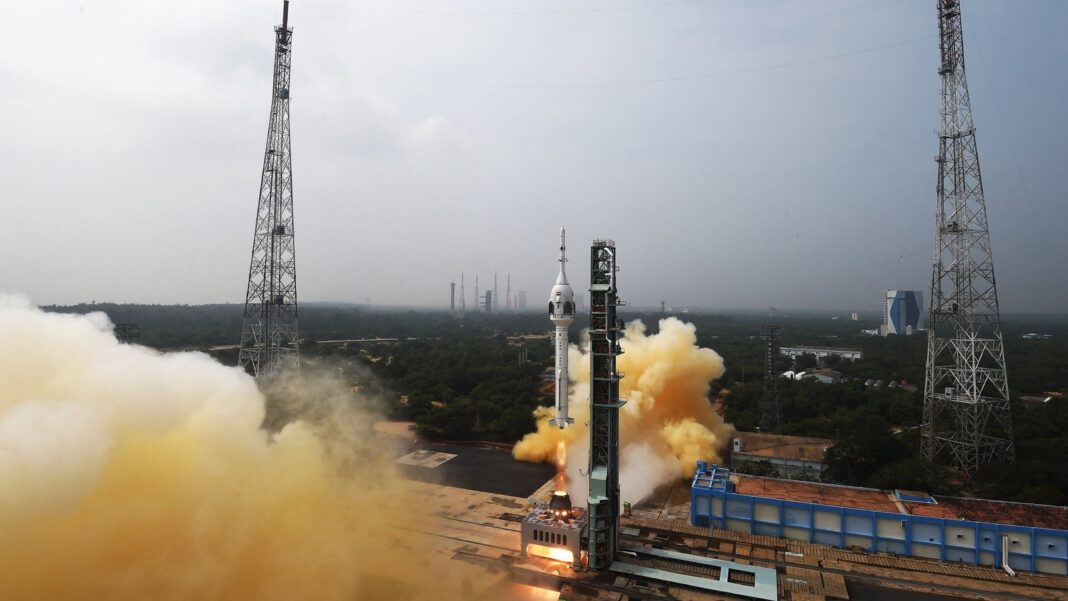Building on the momentum of 2023, Indian Space Research Organisation or ISRO is set to start 2024 with a bang. India is set to launch its first X-Ray Polarimeter Satellite on January 1. This handout photo taken and released by Indian Space Research Organisation (ISRO) on October 21, 2023, shows the lift-off of the Gaganyaan Test Vehicle (TV) from the Satish Dhawan Space Centre in Sriharikota, an island off the coast of southern Andhra Pradesh state.
(AFP) The XPoSat mission will lift off at 9:10 am using a Polar Satellite Launch Vehicle (PSLV), the space agency announced. Wrap up the year gone by & gear up for 2024 with HT! Click here Also read: Not only Chandrayaan 3, ISRO also conducted 7 other flawless launches in 2023 What is ISRO’s XPoSat? While there are already existing space-based observatories which offer valuable spectroscopic and timing data, figuring out exactly what kind of light comes from these celestial bodies out there is still really tricky for astronomers. India’s XPoSat mission in its 5 years of life will measure orientation of vibration in the light wave which will help understand radiation mechanism and geometry of celestial sources.
The mission “capturing the degree and angle of polarisation, would add two crucial dimensions to our comprehension”, ISRO said. Also read: ISRO’s major announcement on ‘Aditya-L1’ mission and Indian space station What payloads does the mission carry? The spacecraft is equipped with two scientific payloads in a low Earth orbit. • The primary payload, POLIX (Polarimeter Instrument in X-rays), will measure the degree and angle of polarisation in the medium X-ray energy range of 8-30 keV, originating from astronomical sources.
• The XSPECT (X-ray Spectroscopy and Timing) payload will provide spectroscopic information in the energy range of 0. 8-15 keV. Also read: What next for ISRO after Chandrayaan 3? Five upcoming Indian space missions in 2024 Together, these payloads enable the XPoSat mission to simultaneously study the temporal, spectral, and polarisation features of bright X-ray sources.
This capability aids in understanding the emission mechanisms of various astronomical sources like black holes, neutron stars, active galactic nuclei, and pulsar wind nebulae. Activities-packed January for ISRO Along with this, ISRO, within the first week itself is set to initiate the insertion of its Aditya L1 solar probe into its halo orbit. “The Lagrangian point (L1) insertion of Aditya L1 is scheduled for January 6, 2024, although the exact time has not been decided yet,” ISRO chief S Somanath said on Saturday.
Following it, around January 12, ISRO is also gearing up for the launch of the INSAT-3DS meteorological satellites aboard its Geosynchronous Launch Vehicle (GSLV-F14). Also read- Three launches in Q1: ISRO’s upcoming missions in 2024 The INSAT-3DS mission will deploy satellites for the India Meteorological Department (IMD) as part of its series of climate observatory satellites. Unlock a world of Benefits with HT! From insightful newsletters to real-time news alerts and a personalized news feed – it’s all here, just a click away! – Login Now! SHARE THIS ARTICLE ON Share this article Share Via Copy Link Isro Isro Missions.
From: hindustantimes
URL: https://www.hindustantimes.com/technology/isro-to-welcome-2024-with-india-s-first-x-ray-polarimeter-satellite-launch-on-jan-1-101703740216855.html



